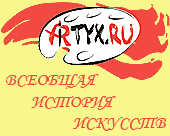передняя азия
древний египет
средиземноморье
древняя греция
эллинизм
древний рим
сев. причерноморье
древнее закавказье
древний иран
средняя азия
древняя индия
древний китай
НОВОСТИ ЭНЦИКЛОПЕДИЯ БИБЛИОТЕКА
Specific Words and Expressions
As it is known, so that to investigate a field of science or art, along the knowledge of the general concepts it is necessary to know the words and expressions, used in this field. The more known, simple and stable words and expressions we use in this or that field of art, the more fruitful investigation work would be.
Flat - woven carpets
BARKAN - name, given in Uzbekistan to a Palas made of the black thread.
BARNI - see VARNI
BESH KESHTA - the ornamenten thick-woven carpet of elongated form, which was used for inner and outer decoration of the Kirghizean yurts.
BURIYA- elongated and ornamented complex-woven mat.
CHIN-a delicate-woven palas of a very high gualitv, manufactured m villages of Khojagesanli and Gobu near Baku [table 40]. Thin Chins, formerly made as a special reguire, were estimated not according to its size but to weight.
No doubt that Chin is a synonyum of Chini. In the works of Azerbaijanian poets of the X-XII-th centuries Gatran Tebrizi and Nizami Gyanjavi a carpet Chini was mentioned.
CHINI - see Chin
DAMARLY - a name given by Azerbaijanians to Zili-woven carpets with relief ornament.
DASTKHAN - or Dastarkhan - a white delicate woven palas, which was used in the past by Azerbaijanians and Uigurs as a table-jloth. It is guadrangular with monotonous middle field and complex ornament embroidered along the margins.
GAIYG - a name of one of Oguzian tribes. The Azerbaijanian carpet-makers give this name to the carpets, woven by a complex method of Zili, Varni, Sumakh tyres. See Zili, Varni, Sumakh.
GARDEK [curtain-screen] - In Azerbaijan and Turkmenistan in the wedding-day a definite corner of the room with a bride-bed was usually separated by a carpet - made Gardek. In the old times Gardeks were made of silk and embroidered with complex ornament.
GARVUD - see Karvud GAZHARY - ornamented carpet at Uzbekistan, Kirghizstan and Turkmenistan. It is also called Gajari.
GILEM- a name given to Kilim [see Kilim] by Uigurs and Kirghizes.
GILYAM - a name, given to Kilim by Uzbeks [see Kilim]
GURDIN - see Kufzin
GYZ GILAM - a name, given to a Palas-woven Gardek by Uzbeks.
JAJIM - see Jejim
JEJIM - thick-woven carpet of reversible rug tyre in Azerbaijan [Lemberan, Agjabedi, Shusha, Jebrail, Naknichevan]. It is made by threading the woof through the warp on a long horizontal loom. Jejim is usually woven of colored gezh [gezh or gej is a crude silk] or sometimes from wool and seldom from cotton yarn. The ornament often comprises the vertical colored stripes [table 90-2]. JejirrTs width is usually 30-35 centimetres and length - 15-16 metres. It is used as home inventary by settled people, a little mattress for sitting or a usual mattress, blanket, mutakkabed-spread, geiba [a bag] as well as a farsh. In the middle ages it was also called Jajim.
JEZHIM - see Jejim
JIJIM- a name given to Jejim by Turks [see Jejim]
KAKHMA - a name given by Uigurs and Karakalpaks to a striped reversible rug. They also use the following terms: Gakhma, Gokhma or Kokhma.
KARPAD - see Karvud
KARPED - see Karvud
KARPUD- see Karvud
KARPET - a name given to a reversible rug by Armenians [see Karvud]
KARPUT- see Karvud
KARVUD - carpets, woven by terekeme-cattle-breeders nomads of oguzian - Turk origin, who lived in Azerbaijan. Karvuds are something between a reversible rug and Kilim [see Kilim]. In Azerbaijanian district Karvud is also called Karput. "Kar" means in old Turkish language combining one thing with another [Makhmud Cashgar "Divani lugat-it Turk", Ankara, p. 265, 1948] "Put" or "Pot" in Turkish language means varn, twisted three-four times [V. V. Radlov. Oput Dictionary of Turkish Dialects. V. IV-2, p. 1283]. The oldest masters called Karvud as Karpesh. In this word "Kar" means Art, Craft and "Pesh" or "Bet" - is a shawl, woven from soft goat wool by means of threading the woof, as by reversible rug-weaving. [Barkhane gashe lugati]. Reversible rug, being a kind of flat-woven carpets, made by means of threading the woof through the warp, is known to be called by Armenians as Karpet. The Englishmen gave this name to all kinds of carpets. This name is a synonym to given above names Karvud, Karput or Karpet expressing one and the same concept, appeared as a result of cultural and commercial relationships.
KELAM- a name given to Kilim by Uigurs [see Kilim]
KELEM- a name given to Kilim by Uzbeks and Kirghizes [see Kilim]. It is seldom called as Kilem.
KERECHET TANUU - an elongated carpet used by Kirghizes for yurts decoration.
KERIM OR KEREM - Makhmud Cashgar in his "Divani lugat-it Turk" describes the meaning of this term in the following way "an ornamented khali, covering the walls" [v. 1, p. 398]
KESA - a name given to Palas by Kurds, lived in the South Azerbaijan in the Middle ages. They also called it as Kosa.
KEVAL - a name given in the Middle ages to the old flat-woven carpets.
KHAMYAN - a name given to Varni in Agjabedinian district of Azerbaijan [see Varni]
KHASIR - a kind of a farsh - a mat, woven from pressed corne. Covered on floors in living rooms [particular in rooms on the ground floor] and mosques. Still in immemorial times in East countries as well as in Azerbaijan Khasir were usually put under the piled and flat-woven carpets to protect them from dampness.
KILAM - a name given to Kilim in Uzbekistan [see Kilim]
KILEN - a common name given in Azerbaijan and Turmenistan to flat-woven carpets, made by means of complex threading. This characterizes the secondary stage of development of the carpet-making art. The double-sided Kilims may be used on both sides. A word Kilim is a changed form of Uigurian word Gilem]
KOSA - see Kesa
KURZIN r- a name given in the Middle ages to flat-woven carpets of Kilim and Palas types.
MAKHFUR - a carpet with emossed ornament, woven by means of complex winding [Fig. 43]. On the basis of reliable sources it may be confirmed that in the early Middle ages Makhfurs were manufactured only in the South East Azerbaijan - in Shirvana, Khursana and Lizanian district the main town of which was Shemakha. As it is noted in "Khidud - al Alem" written in X-th century, the Makhfurs were exported from this districts to all corners of the world. In the XI-XII-th centuries the Makhfurs were also manufactured in Uzbekistan particularly in Samarkand. The fact, that doctor Shamsaddin Mukhammed Suzani who died in Samarkand mentioned Markhfur in his work.
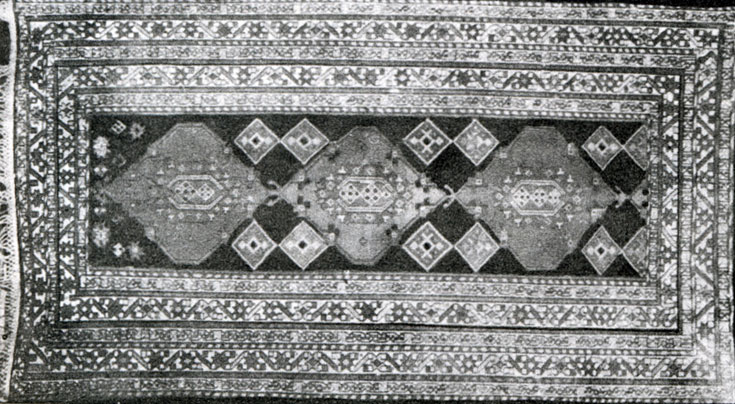
Fig. 43. 'Makhfuri' flat-woven carpet. Moscow, Museum of Oriental Culture (coloured)

"This hag with ugly face is weaving a carpet, wuich is Makhfur again"
MASHU - a common name given to flat-woven carpets in the Middle Asia
NAG - a name given to a Nakh in Turkey [see Nakh]
NAKH - a name given to a netting flat-woven carpet which was covered on horses and camels; sometimes it was used as a wall decoration. It is also called as "Nag" or "Rum Zilisi".
PALAS - a simple-woven carpet with wide horizontal stripes. Reversible, used on both sides.
PALOS - a name given to Palas in the Middle Asia [see Palas] .
PALAZ - see Palas.
PARNI - see Varni
PARNIYAN - a name given to a delicate-woven Varni.
RUM ZILISI - see Nakh
SILI - a name given by Osmanian Turks to Zili [see Zili]
SUMAKH - large carpet-farshes, woven by means of complex winding.
SUMAKHCHA - a small Sumakh, woven by means of complex winding [see Sumakh]
TINFASA- a name given by Arabs to all flat-woven carpets, made by Kirghizes on a horizontal loom set without declination. Tirma is ornamented by vertical stripes and stylized images of paws, hoof tracks, eyes, horns, legs of horses, sheep, dear, tiger, mice and other animals. The name Tirma is also given to the expensive complex-woven cloth, manufactured in India, Iran and Turkey. Tirma is usually woven from soft and thin wool.
UTTABI - a kind of a delicate flat-woven carpet of Zili type [see Zili]. Its origin refers to one of the quarters of Mosulacity, situated to the north of Baghdad - the capital of Irak, not far from the South East boundary of Turkey. In the XIV-th century Uttabi-carpets, manufactured in this quarter became famous all over the world. This name of the carpets was known at all European markets. The researchers suppose that a term "Teppich" widely used in the West Europe, was originated from "Uttabi"
SHADDA - a type of the flat-woven carpets, made by means of threading and winding. Shadda is manufactured mostly in Azerbaijan. Initially it was ornamented by chess-board image [shatranj, Table 86-l] and later by ornamental subject pictures. Subject ornament usually describes caravan of camels sometimes it is the image of man or animals. [Table 86-2]. A word "Shadda" was no doubt originated from the word "Shatranj" ["sad ranj"] - chess.
SHAL - a kind of a thick cloth of Palas type, which is woven from the camel wool in Uzbekistan. It is called a Shol in Bukharian district. SHLYANG-a simple comparatively rough-woven Palas which was fixed to a reverse side of expensive pile carpets to protect them from dampness. It was manufactured in XVI-XVII-th centuries in South Azerbaijan.
SHAMT-a name given by Azerbaijanian Kurds to large Kilims. SHATRANJI - a name given in the middle ages to the silk chessed clothes or to thin carpets from wool made by means of threading as Pa Irises were woven [see Shadda]
SHOL - see Shal
VARNI - [Azerb.] - a large khali woven with one and a half knots. Varnies were manufactured in Karabakh and Kazakh carpet areas. The main ornament of these khalies usually is a large stylized image of dragon in the shape of "S". In the Middle ages delicate woven Varnis were called Perniyan, Berna or Perno. In Agjabedinian district of Azerbaijan they were called as Gemyan.
ZERILU - in some villages of Azerbaijan as well as in some publications this name is given to Zili-woven carpets.
ZILI - type of delicate flat-woven carpet. It is woven by method of complex winding. Zili represent the third period of development of carpet-making art. Zili is also called as Zil or Zila. The Azerbaijanian Zilis have artistic and technical peculiarities, which make them differ from Zilis, manufactured in other countries. In classical literature of the Middle ages we meet a term Zili along with Zilu. ZILICHA - a name given to a small Zili.
ZILU - see Zili
ZILUCHA - a name given to a small Zili in Uzbekistan Z
ILUCHA - a name given to a small Zili in Uzbekistan
ZILCHA- see Zilicha
YABY - a name given by Kirghizes and Uzbeks to a Palas-woven cover, which was put under or over saddle.
Pile carpets
ALACHA GILYAM - name given by Uzbeks and Kazakhs to a stri-red multicoloured carpet.
ASALI - a name given to yellow carpets by Jews lived in Azerbaijan in the town of Kuba [as all in Persian means "honey"]
AVAK КАР a large sack chuval made of carpet material with nap, which Kirghizes use for plates and dishes.
Ayatlyg a carpet in which Turkmenians roll a body of deceased to bring it to graveyard. It is also called Ayatly.
BISAT- a name given in the Middle ages to a large delicate-woven carpet. Mentioned in poems and ghazels by Nizarni Gyanjavi and Mukhammed Fizuli.
BUB - a name given in the past in the Middle Asia to a large thin-woven carjJet. A famous poet of the IX-th century Rudaki used this name as follows:

"On the following day Shah ordered to tidy up a garden, he ordered to put some couches there and to trover them with bub"
FARSH - see Fersh
FARSKA or FERSHE- see Fersh
FERSH - in Arabian language means home utility. In Iranian Azerbaijan and Turkey this name was given to a carpet and bedding.
FERSHI-DINARI - a thin carpet with relief ornament on white ground.This word is met at Gatran Tehriz: [XI century]:

"Morning wind brushed Fershi-Dinari off flower garden. The spring clouds went awav and the garden laid clean of Kafur ornamenl [the Kafur tree covered with rime]
GABA - see GYABA
GALI - a name given by Iranians to a large pile Khfli [see Galyn]
GALIN - see Galyn
GALINCHA - a name, given to a small carpet in the South-Fast Azerbaijan [Kuba district] [see Galyn]
GALY - a large pile Khali. In works of Turkish literature, written in Arabian alphabet, this carpet is called as Galy, but today we use a term Khali. Galy also means strength and durability, which are characteristic for nap carpets.
GALYN 7- a name given by Jagatayian Turks and Afghans to a large pile Khali made by means of knot weaving.
The Arabian geographer of the XIII-th century Yagut Gamavi supposes that a word "Gaii" is originated from the name of Galigala town in Erzrume, but we can't admit this settlement. As you know the Turkish nomads preferred flat-woven carpets [such as Paias, kilim, Zili, Jejim, Sumakh and others] they were thin, light and not durable. The pile carpets were woven by means of one and a half and double knots, that's why they were in two-six times thicker than flat-woven carpets and respectively they were more durable. As it was noted in the 1-st volume the pile carpets appeared later than flat-woven ones. Due to this fact in the old times the carpet-makers and users called them "Galyn" that was translated as "thick".
In connection with this it should be noted that in Karabakh, Mugan, Gyanjinian and Kazakh .districts of Azerbaijan as well as in some regions of Turkey, Khaliwith nap are called as Gyaba [see Gyaba], which in Turkish languages means rough, thick. In the Middle Asia, Caucasus and as well as in Asia Minor the Turks in the ancient times gave to the daughters the pile carpets as dowry. These carpets were the main and the most expensive part of the dowry. In Modern Azerbaijanian language there is a word "jekhiz"-dowry, adopted from Arabian language. The ageold Turkish one is "Galyn" which possesses the same meaning.
GALYNCHA- a name given in the North Fast of Azerbaijan in Kuba district to а long small Galyn [see Galyn], i e. a small Khali [see Khali], but in Karabakh tht name Is given to winter clothes-pojw; shubok, i. a. jacket made of quilted wool.
GATIFA carpet like pile cloths of silts ami wool, exported by Arabians from Caucasus.
GEVA - a name given by AzerbaijaniaTl Kurds to Gyaba [see Gyaba] In oral folk literature we met for example:
Whai is the sweetest thing in the world? Among offsprings children Among animals camel Among things, wealth Geva
GERK - see Gyaba
GILAM - see Gilyam
GILEM a name given by Uigurs to carpets in common meaning, particuliarly to Kilim [see Kilim]
GUMRA - a small carpet "Namazlyk" [see Natnazlyk]
GYARTAJA - an elongated Karabakh carpet, exported in the past to istambul by merchants. Gyartafa means Karabakh present.
GYATIFA see Gatifa
GYABA- in Azerbaijan [Muganian, Karabakh, Gyanjinian and Kazakh districts] as well as in some areas of Turkey this name is given to elongated pile carpets. A worn "Gyaba" is met in Azerbaijanian oral folk literature:
...Kilim, Gyaba are laid m fecess I observte the ravine behing you Your belover stands on she hillak...
The Azerbaijanian poet of the XVIII-th century M. F . Vagif uses the word "Gyaba" in the following wax in his quattrain:
...Sitting in the doorway wrap yoursetf iu Gyaba up Don't give the seeds to your hens Your wife slaughters you Why are you sleeping still Being unaware?...
"Gyaba" is a changed form of "Gaba" - rough Gyaba as compared with flat-woven carpets is much thicker and rougher. That's why the carpet-makers and users called them as Guaba-Gaba. It may be concluded that the Arabian word "Geba" [which means long street-cloths] is synonymous to the word "Guaba". "Guaba" is read differently as follows Gebe, Kebe, Kepe, Gyava. The Middle Asian experts in the science of carpet-making associate this word by mistake with the word Kaaba [Ka ba] [see also Galyn]
GYZ GILYAM- a name given by Karakalpaks to elongated carpets, made for yurts, They are also called as Janbau.
JUINABE - the Turkmenian carpets were called as Juinabe at the markets in the past.
JULHIRS - a name given to rough-and-thick-woven carpets in Samarkand.
KABA - see Gyaba
КАРА - a hut made of cane and thatch
КALIN - see Galyn
KALY - a name given in the Middle Asia to Khali [see Khali]
KALYN - see Galyn
KALYCHYG - a. small pile carpets in Uzbekistan of Azerbaijan to a large Galyn. In oral folk literature:
This ravine is a green khali - A beautiful place for flowers growin I saw my beloved In shoes on high heels.
KHALINCHA - a small khali in Kuba district of Azerbaijan
KHALICHA - see Khalcha
KHALCHA - a name given in North-East of Azerbaijan to small khali [see Khali]. A word met in oral folk literature:
Karabakh alcha, Khalcha is spread I saw a beautiful girl Who is like a rose-bud.
In the West and South districts of Azerbaijan a name Khalcha is given to a small Khali [see Khali] or Galyn [see Galyn]. Khaly is a large Khali [see Khali] in Turkmenistan and Turkey.
KHALY - a name given in Uzbekistan, Turkmenistan and in North-East of Azerbaijan to a large Galyn [see Galyn]. The word is a misrepresented form of the word Galy [see Galy].
KHALYG - small carpets used by Turkmens for covering on the camel back.
KHALYJYG - a name given in Turkmenistan and Turkey to small pile Khalcha [see Khalcha]
KHIRSEK-a name given in the Middle Asia and Azerbaijan to thick simple-woven pile carpets.
KILYAM - a name given in Uzbekistan to striped pile carpets as well as to flat-woven carpets of Kilim type [see Kilim]
MIGRAZI - a name given in X-XII-th centuries to the carpets, which have naps cut with scissors. This word is met in divans of Azerbaijanian poets Gatran Tebrizi, Nizami Gyanjavi [Migrazi is described in details in the first volume of the given work]
NAMAZLYK - a small carpet with composition of "Lyachakli" ["Mekhrabli"], which was used in the recent past in Azerbaijan for Namaz-procedure. A small Namazlyk is also called Sajjada.
PAD- a name given by Kirghizes to pile carpets with very high loops
PATI ZULVARAG- a name given by Uzbeks [from Samarkand] to long pile carpets.
Shadorvan - a name given in the early Middle ages to the most expensive delicate-woven carpet, which was used in palaces as curtain or a large tent as well as was spread on the floor.
SHADVARD - a name given in the early Middle ages to a large Khali with complex ornament.
SAJJADA- a name given in Aravia to any carpets and in Turkey to small carpets Namazlyks.
SAFSAJJADASI [see Namazlyk] - a name given in Turkey to a large Khali with complex ornament.
SAJJADA- a name given in Aravia to any carpets and in Turkey to small carpets Namazlyks.
SAFSAJJADASI [see Namazlyk] - a name given in Turkey to a large Khali used for praying on which several persons perform Namaz simultaneously. In the middle field composition there is an image of Mekhraba. Examples of large Safsajjadasi are present today in Aiyasofiya mosque in Istambul in the sepulchre of Movlan Rumi in Konya.
TEVASI - a name given in the Middle ages to lagre multicoloured Khali with complex ornament.
TEGIRCHI - an elongated carpet which Kirghizes used in their yurts.
ZARBIYA - a name given in the Middle ages in Turkey to large thick-woven Khali.
ZULIVA- a name given to large multicoloured delicate-woven Khali.
ZARWAF - a name given to the carpets whrh have golden and silver threads in the woof and warp. Method of such carpet-making is also called as Zarbaf.
Carpet ware
AINA KHALAT - a shallow flat palas-woven sack in which Uzbeks and Turkmens put their glass.
AKBASGUR - a sash, 30-35 centimeters in width and 15 meters in length, which was used by Kirghizes and Karakatpaks for yurt decoration. The pile ornament was made on white flat-woven field. It was also called as Akgysh, Ak Yup, Bashkur and Bagysh.
AK YUR - a long sash used in Turkmenistan for yurt decoration [see AK Basgur]
ASMALDYG - a carpet with fringe, which Turkmens put on the camel back.
ASMALYG - see Asmaldyg
AT JABUU - see At Zhabuu
AT ZHAWUU - a name given by Kirghizes to horse-cloth
ARGQSH CHUVAL - a carpet chuval for wheat used by Turkmens and Uzbeks.
BAGYSH - a long carpet sash used by Uzbeks for yurt decoration [see Akbasgur]
BAKYSH - see Bagysh
BASGUR - see Akbasgur
BASKUR - see Akbasgur
BASHTYG - a large carpet sack for home inventory used by Kirghizes and Uzbeks
BOGCHA - a square piece of thick silk cloth. It was a Palas-woven one with edging [Bog - a large tent, cha - diminutive suffix], in which linings and clothes were put. Till recent in Azerbaijan, Uzbekistan, Turkmenistan and Turkev Bogcha with linings and clothes was bundled up.
BAKHCНА - see Bogcha
ВUKHCHA - see Bogcha
CHANTA - in Azerbaijan this name was given to a small square flat or pile-woven sack, 30-35x 35-40 centimeteres.
CHATY - a thick rope which was used in Azerbaijan for tiding up the animals. Women bind up the brass or earthenware jugs, in which they carry water from sources. Length of the rope is approximately 2 meters. It is made of thick lisle thread.
CHEMCHA TORBA - a carpet sack which Turkmens use for ladles, spoons, rolling-pins and so on.
CHUVAL - a large sack in Azerbaijan. Used for wheat, barley or other food grains. Made by Palas or sometimes pile-carpet methods. Still before X-th century a Muganian Chuval was widely spread.
CHUL - in Azerbaijan this name was given to ornamented delicate-woven carpet which was put on back of horse or camel. Usually made by Zili - method [gaiyg]. Sometimes we meet Chuls made by pile-carpet method.
DUZ TORBA - in Azerbaijan and Turkmenistan this name is given to a sack for salt, decorated with ornament. Is woven as Zili - by winding method.
DUYA KHALYG - a carpet with long fringe which Turkmens put on camel back. It is also called as Asmaldyg [see Asmaldyg]
ENGSI - carpet-woven curtain, used by Turkmens for hanging on the yurt's door.
ENST - see Engsi
ECIK KAS - Karakalpaks give this name to a small carpet which was hanged on the yurfs door.
FARMASH - see Mafrash
FERMESH - a name given by Azerbaijanians to Mafrash [see Mafrash]
GALYGI - sex. Os makduk
GAP - a name given to carpet woven sack in the Middle Asia
GAPHONCHLYG [Gapyichilik] - a small carpet which is hanged over the door at the inner side. Thev are also called as Kapunnuk or Gagylyg
GARCHIN - a small chuval in the Middle Asia
GASHLYG - it is smaller than Geiba hut of the same form. Till recent Azerbaijanians leaving for travelling pat in Gashlyg their food and hanged it on the front side of the saddle
GASHYGLAN - in Azerbaijan the name was given to the elongated sack, a front side of which was Zili-woven cloth, and a back side was Palas-woven cloth. Spoons, rolling-pins and ladles were put in it.
GEIBA - in Azerbaijan this name was given to a small Khurjun. It is usually made by Jejim or sometimes by Zili or pile-carpet methods. Those who were going to perform a short travel put their food in it.
GERMESH - a small carpel which is put by Turkmens on the yurts threshold. It is also called as Germash.
GOLCHAG - thin cloth, which is winded by Azerbaijanians around wrists when they work. Golchag is usually made of cotton or wool [10X70 sm), by threading method as Palas was made.
GYZYL CHUVAL - a name, given by Turkmens to dark-red chuval. It is used in festivals.
JABU - a name given by Kirghizes to Chuval (see Chuval]
JAN KISESI - a-small "sack 112X20, 25 sm] like mittens. Palas-woven. Azerbaijanians massage their body with the help of it when washing.
IOLAM in the Middle Asia, particularly in Turkmenistan, this name is given to a sash,used for yurt decoration, where it was put instead of cornice. Width is 30 35 centimeteres, length 15 18 meters. Made by Palas method. On yellow-white field there is a relief ornament [knots]. A Iolam sash may be considered as a high gualitv original example of art Turkmen carpet-makers
КАР - a name given by Turkmens to Gapa [see Gapa]
KAPUNLUK - see Gapiinchlyg.
KARCHIN - a name given in the Middle Asia to a small Chuval.
KARSHIN - see Garchin [Garshin]
KASHYGLGN - a name given by Turkmens to Kashyk
КАР - see Hashyk Кар
KASHYGLYG - see Kashyglon
KASHYK КАР in Kirghizia this name is given to elongated sack made of carpet cloth, in which spoons are preserved.
KEREGE a wide sack made of carpet cloth, which is hanged on the wall of yurt in the Middle Asia
KHALYKH - see Osmalduk
KHARAL - a large sack made in Azerbaijan of rough wool or cottor.
KHOAN - till recent in Turkey and in North and South Azerbaijan this name was given to a white Palas-woven table-cloth
KHORJUM - see Khurjun
KHURJIM - see Khurjun
KHURJIN - see Khurjun
KHURJUM - see Khurjun
KHURJUN - a misrepresented form of the word "Khochin", which means to lay the table. Till recent in all districts of Azerbaijan food or travel was carried in Khurjun and this bundle was put on shoulders or on horse back.
KOLAN - in Turkey a name, given to a narrow flat-woven sash KOSH CHABYG - a name, given by Kirghizes to Chuval - a sack hanged on the wall of the yurt.
KURJUN - a name given by Kirghizes and Turkmens to. Khurjun [see Khurjun]
MARKABI - a name given by Turkmens to Mekhrabi or Namazlyk carpets [see Namazlyk]
MALAGADAN - in Nort-East districts of Azerbaijan this name was giren to elongated Zili-woven sack for ladles and large spoons.
MAPRACH - a name given by Uzbeks and Turkmens to Mafrash [see Mafrash]
MAFRACH - a name given in the Middle Asia to Malrash [see Mafrash] MAFRASH - a kind of trunk, which Azerbaijanians, leaving one place for another put their beddings. Made by Kilim or Zili or sometimes pile methods.
MESHREF - a name given by Jews lived in Azerbaijan [Kuba and Derbent] to Fermesh [see Fermesh]
NAPRAMACH - a name given to Mafrash by Karakalpaks and Uzbeks? OJAGBASH1 - Turkmens and Azerbaijanians give this name to П - shaped carpet which they hang ojag.
ORKEN - long durable rope used it Azerbaijan for animals loading.
ORTUK - a large Palas in Azerbaijan made of cotton of linen yarn and edged, it is used for covering something, for example, beddings in the corner of the room, or it is put on the animal back
OSMALDUK - a pile carpet with pompones made close to one another.
Turkmens and Kirghizes put it on the camel back on which a bride arrives to a fiance's house. It is often made of silk thread. Another name is Khalykhi.
PARDA - a white Palas-woven cloth with long fringe. It was used in
Azerbaijan as curtain for door leading into the yard or marguee entrance.
PUSHTI - a small pile carpet in Iranian Azerbaijan. It is hanged on the wall in places for sitting so that to protect the back from dampness.
SIJIM - a thick rope made of rough lisle thread. Such rope is used in Azerbaijan for sheafer binding or fixing the load to araba.
TERMA - a sash used by Kirghizes to decorate the inner walls of the yurts. It looks like Turkmenian iolam [see Iolam]. In India, Iran and Turkey the ornamented wool cloth "Terma" is manifactured.
TORBA - In the Middle Asia, Azerbaijan and Turkey a small or middlesized sack used for different purposes. Made usually of simple or striped Palases.
UK BASHI - a large Palas-woven sack used by Uzbeks, Kirghizes and Turkmens for transportation of wooden foundations of vurts. It is also called as Uk Кар, Ukuji, Uk Ushi.
UK КАР - see Uk Bashi
UK YJ - see Uk Bashi
UK USHUK - see Uk Bashi
YUKUSU - edged coverlet made of Jejim [see Jejim] or sometimes of delicate-woven Palas. Azerbaijanians cover with it their beddings, guilts, matrasses or other things, which were in the coner of the room or in the recess.
YAKHARUZU - in Azerbaijan this name was given to a carpet made of pile cloth with pompones. Azerbaijanians put this carpets on the saddle.
The decorative base of the decorative-applied art includes the ornaments of different structure and forms. Each ornament, decorating the subject, which makes it more beautiful and attractive, has its own structural schemes, name and specific forms of composition.
The elements of ornaments and composition, which were initially created in a simple, primitive form on the early stage of development are gradually developed tn the process of decorative art evolution. They are being improved due to new and individual creative work of the talanted masters, who are of the people; and these elements become the traditional ones.
The structure, composition and ornament take an important place in all fields of the decorative art - in architectural ornament and in carpet-making art in particular. That's why it is considered to be necessary, for the first time in the history of decorative art study, to give detailed description of the structure, composition and ornament with references to corresponding illustrations.
ISLIMI One of the main elements of Azerbaijanian decorative and applied art, the carpet-making art in particular, is a drawing called as ISLIMI. Today the following names of this drawing are used in Azerbaijan, Middle Asia, Turkey - ISLIMI; in Iran, Afganistan - ESLIMI-KHATAI; in the West Europe and America - ARABES SQUE. The term "Islimi" is connected to the name of the village in the Middle Asia.
Islimis, which play the main role in the compositions "Islimi bendlik" are aot used separately. Islimi is often used at the end of spiral or as a decoration of the guiding line of a spiral volute.
Islimi, which is widely used in Azerbaijanian ornament, may be devided into several groups.
1. SADE-ISLIMI [simple] - Islimi of the almond-shaped form without decorations, is placed at the ends of the small spirals and at the volutes of the large spirals [Fig. 48-1].

Fig. 48-1. Islimi elements of different forms, used in decorative art of Azerbaijan. 1. Sade - simple Islimi
2. GANADLY ISLIMI [winged] - It differs from the simple Islimi by its leaves-wings, which are divided into two parts, and the form of which is more complicated. These wings are open upwards and downwards depending on the spiral direction. The down wing is usually smaller than the upper one. The ends of the wings are usually sharp, rounded or mixed [Fig. 48-2].

Fig. 48-2. Islimi elements of different forms, used in decorative art of Azerbaijan. 2. Ganadly - wing Islimi
3. KHACHALY ISLIMI [forked] - It reminds a broken twig of a tree or an open mouth of animal. Khachly islimi in its form reminds Ganadly islimi. But Khachaly islimi is placed not only at the ends of the spiral but also at the branches of different forms. Ganadly islimis, which are in the front view of small size and in the rear view - of large size, are half-embossed and Khachaly islimis are entire and flat [Fig. 48-3].

Fig. 48-3. Islimi elements of different forms, used in decorative art of Azerbaijan. 3. Khachaly - double Islimi
4. BUTALY ISLIMI [almond-shaped] - In the shape of almond [Fig. 48-4]. Differs from the above mentioned Islimi by the original form and by the place it takes in the composition.

Fig. 48-4. Islimi elements of different forms, used in decorative art of Azerbaijan. 4. Butaly - almond - shaped Islimi
5. KHORME ISLIMI [wattled] - A wide double border, characteristic for Khorme islimi, connecting the wings of the front and rear view. Used as a base for creation the different variants [simple and complex forms] of, Islimi gives the possibility to wattle them [Fig. 48-5].

Fig. 48-5. Islimi elements of different forms, used in decorative art of Azerbaijan. 5. Khorme - wattled Islimi
6. ISLIMI BENDLIK - A complex composition, created from the above mentioned types of Islimi. The "Islimi bendlik" composition is met at Khali and carpets of the XVI-XVII-th centuries, made in the South Azerbaijan [Fig. 49].

Fig. 49. 'Islimi bendlik' - composition, South Azerbaijan. Second half of the XVI century
Khatai
In all fields of Azerbaijanian decorative art, carpet-making art in particular, a composition KHATAI by name is widely used. This composition is included into the wide borders [Fig. 52] and into the center field [Fig. 53] of the large carpets. Khatai may be related to such complex compositions of the Azerbaijanian ornament as "Lachak turunj", "Sheikh Safi", "Afshan". The wide, elongated "sleeves" or branches, directed from bottom to upward, are the main elements of this composition [Fig. 54]. These "sleeves" are usually arounded by single or double theeth of different form. The inner field of the "sleeves" is filled and decorated by many small and large stylized flowers. These "sleeves" in the form of zigzag, teeth or netting make the composition more expressive and original.
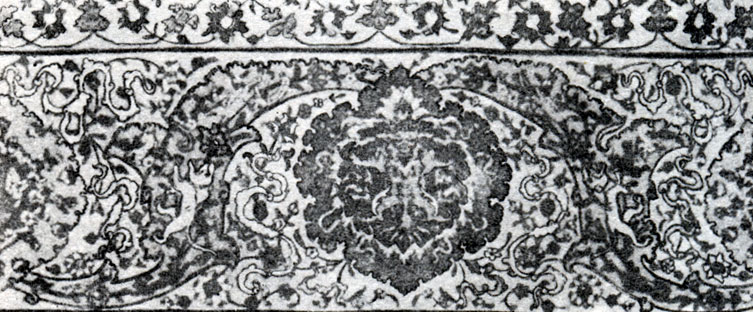
Fig. 52. Khali border. Fragment. Khatai composition. XVI - XVIII centuries. South Azerbaijan
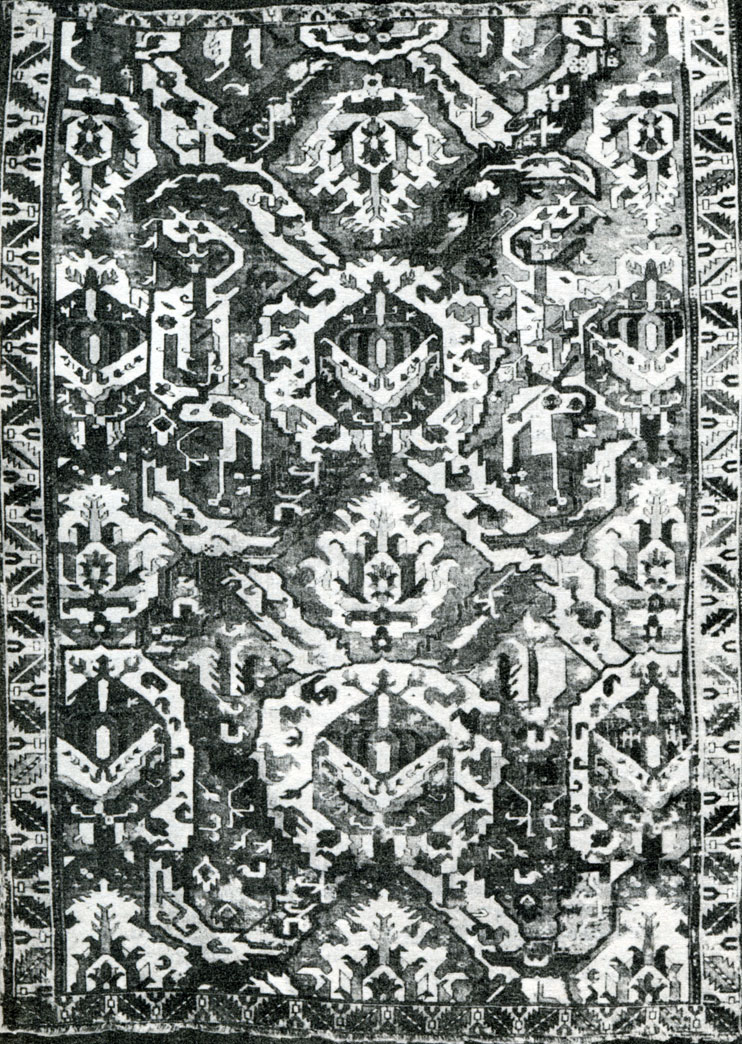
Fig. 53. Shirvan carpet. Khatai composition. XVII century. Budapest, Museum of decorative Art. Inv. N. 7940
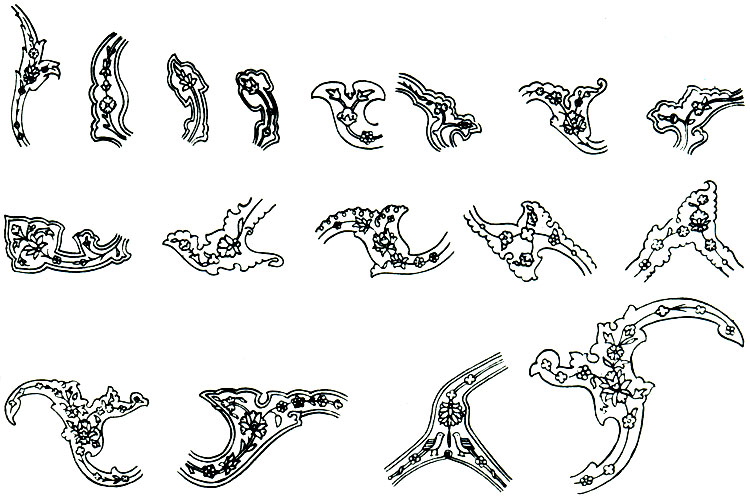
Fig. 54. Elements (heads) of Khatai composition. Samples
The term KHATAI is connected to the name of the town Khata in the East Turkmenistan.
BULUT [Clouds]
BULUT [Clouds]
One of the main elements of the Azerbaijanian ornamental art possessing the individual form of the ornament is "Bulut" [Cloud]. The form of the Clouds is significantly different from the other elements of decor.
In the works of art the image of the Cloud has three different forms: simple, complex and figurative.
The Clouds of a simple form have no toothed outline [Fig. 56], and the Clouds of a complex form are toothed and decorated by "gyfylgyakh" borders and sometimes by "vagana" in the shape of the heads of animals [Fig. 57]. Beside this there are images of the fantastic animals [dragon] and some other living creatures such as man, snake, camel, lion [Fig. 58].
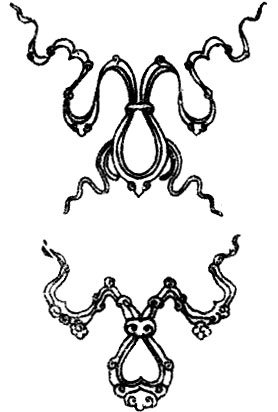
Fig. 56. Elements of stylized 'bulut'. Simple
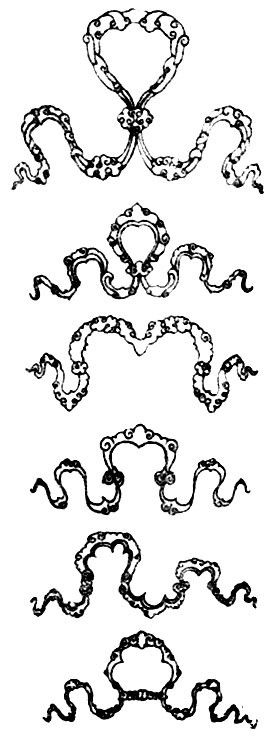
Fig. 57. Elements of stylized 'bulut'. Complex

Fig. 58. Stylized 'bulut'. Images of some living creatures
The Clouds decorate the Khali, made in the XV-XVl-th centuries, such as "Sheikh Safi", "Afshan", "Ovchulug". In the XVII-th century the image of the Clouds was used in the carpet "Shah Abbas", in the XVIII-XIX-th centuries we find these elements in the carpets "Bulut" [Table 93-2] and "Malybeili" [Table 91-1].
The drawings of the Clouds were formed as influenced by the conditions of life and in the connection of the religious beliefs.
Still in remote ages in the Middle Asia and at the Near East including Azerbaijan water was symbolized by a straight or wavy lines reminding a letter S. The movement of the Cloud in the sky was connected with the flowing water and with the image of "a kind dragon", sent by the god to the earth, so that to control rain and water.
Different sources of the East call this dragon differently: Gyuzekh, Aban-gyakh, Mekhrisfand, and the "evel dragon", who brings to the earth drought and hot is called as Ea, Vritra, Turu. Among all these names we relatively know only Gyuzakh. This word is directly connected to the image of the Cloud. In the literature we usually meet the word "Goven-Gyuzekh" ["Luk Gyuzekha" - rainbow].
But ignoring the religious beliefs it is difficult to deny that the snow-white clouds flying in the turquoise sky in the middle of spring [especially near the mountains] are really beautiful.
Magic movement of the caravan in white Clouds in the picturesque landscape and ornamental image of these Clouds attracted attention of the talanted painters and skilful folk masters.
Bashlyg or gubpa
One of the main elements of the ornament in Azerbaijanian decorative - applied art is Bashlyg form [Fig. 63].
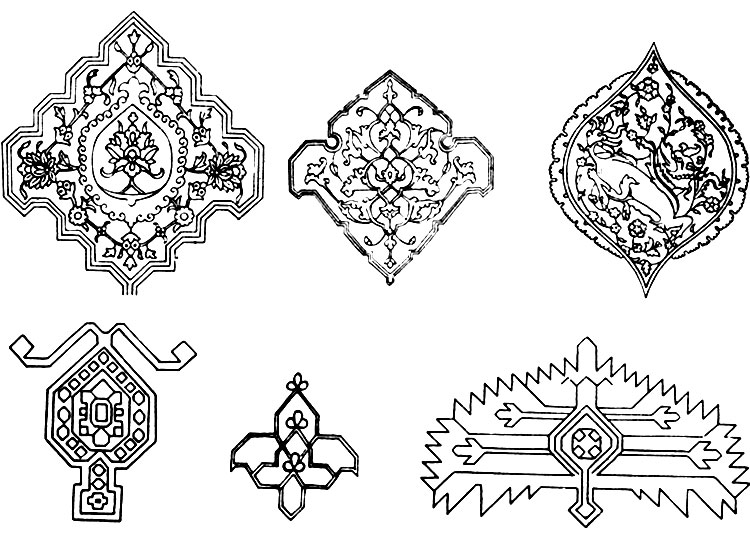
Fig. 63. Bashlyg and Gubpa forms. Samples
The Bashlygs are usually met in the upper part of the elongated gyel - medallion or sometimes in the border strips. ["Lachak Turunj", "Sheikh Safi"].
As it is known, in romote time each country, religion had its own symbol, banner, emblem. For example the emblem of the white banner of Midian state was a moon, and the emblem of the Persian banner was a sun. The emblem of Tatarian state was jeiran. The emblem was not only sewn on the banner but also fixed to the staff of it. So the Bashlygs are the religious emblem. In the XX-th century, after the Soviet power has been established, the Gubpa lost its religious and fantastic meaning. They were replaced by symbols, such as hammer and sickle, five-pointed star, State Emblem.
Buta
Buta is a complex and very rich element of the Azerbaijanian ornament. "Buta", "bite" or "puta" - these are names or the field shrub, which reminds spike, thistle.
If burn the buta, each branch burns separately, as a candle and a tongue of flame rises from it. All this looks like ornamental buta.
The image of buta was one of the forms of decor, developed in the art of the people fire-worshippers. Taking these facts as a basis it may be concluded that buta is an element of decor, which accepted different forms in Azerbaijan, initially it symbolized the tongue of flame.
Buta variations, which play an important role in folk decorative art, may be divided into four groups:
The first group includs the buta, which are connected with the names of the old carpet-making areas. Buta, characteristic for Muganian carpets, are known as Mugan-buta, for Apsheron carpets - Khila-buta, Baky-buta, for carpets from the northeneast part of Azerbaijan - "Shirvan-buta" and soon. All these butas make the first group. [Fig. 64, 1-34]

Fig. 64. Images of buta. First group: "Mugan-buta" 1-6, "Khila-buta" 7-13, "Baku-buta" 14-21, "Shirvan-buta" 22-30, "Sarabi-buta" or "Mir-buta" 31-33, "Gyanja-buta" 34

Fig. 64. Images of buta. First group: 'Mugan-buta' 1-6, 'Khila-buta' 7-13, 'Baku-buta' 14-21, 'Shirvan-buta' 22-30, 'Sarabi-buta' or 'Mir-buta' 31-33, 'Gyanja-buta' 34

Fig. 64. Images of buta. First group: 'Mugan-buta' 1-6, 'Khila-buta' 7-13, 'Baku-buta' 14-21, 'Shirvan-buta' 22-30, 'Sarabi-buta' or 'Mir-buta' 31-33, 'Gyanja-buta' 34
The second group includes the so called "bala buta" [buta-baby], kham-li-buta [a pregnant buta], "balaly buta" [buta with a baby], "evli buta" [married buta], "baba buta" [buta-grandfather] and so on. These butas symbolize a family life [Fig. 65, 35-43]

Fig. 65. Images of buta. Second group. 'Bala-buta' 35, 'Khamli-buta' 36-38. 'Balaly-buta' 39, 'Evli-buta' 40,'Goshaarvadly-buta' 41, 'Arvadushagly-buta', 'Baba-bu-ta' 43

Fig. 65. Images of buta. Second group. 'Bala-buta' 35, 'Khamli-buta' 36-38. 'Balaly-buta' 39, 'Evli-buta' 40,'Goshaarvadly-buta' 41, 'Arvadushagly-buta', 'Baba-bu-ta' 43
The third group includes the images of buta, which have the symbolical meaning. They are "jygga-buta" [buta-crown]. The "jygga-buta" was a traditional symbol of courage, power and glory. "Lelek-buta" [buta-feather] - a symbol of a high range, post. "Kyusulu-buta" [quarrel buta], "fatir-buta" [buta flat cake], "yazyly buta" [buta with inscriptions] [Fig. 66, 44-52].
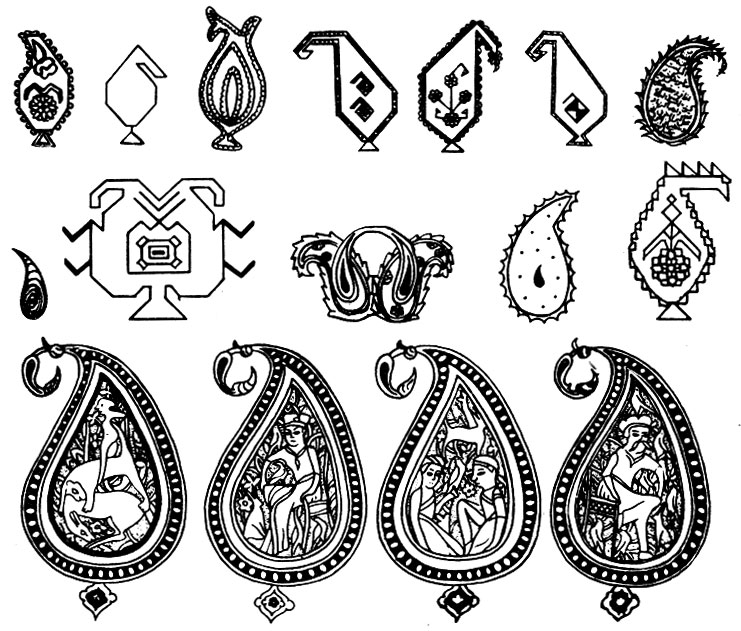
Fig. 66. Images of buta. Third group 'Jy-ga-buta' 44-46, 'Lelek-buta' 47, 'Kyusulu-buta' 48, 'Govushan-buta' 49, 'Fatir-buta' 50, 'Gyu-labdan buta' 51-57, 'Yazyly-buta' 58, 'Man-buta' 59-62

Fig. 66. Images of buta. Third group 'Jy-ga-buta' 44-46, 'Lelek-buta' 47, 'Kyusulu-buta' 48, 'Govushan-buta' 49, 'Fatir-buta' 50, 'Gyu-labdan buta' 51-57, 'Yazyly-buta' 58, 'Man-buta' 59-62
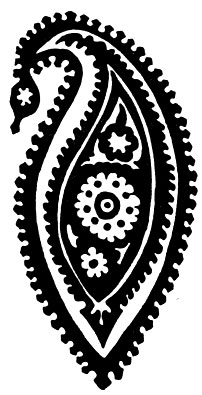
Fig. 66. Images of buta. Third group 'Jy-ga-buta' 44-46, 'Lelek-buta' 47, 'Kyusulu-buta' 48, 'Govushan-buta' 49, 'Fatir-buta' 50, 'Gyu-labdan buta' 51-57, 'Yazyly-buta' 58, 'Man-buta' 59-62
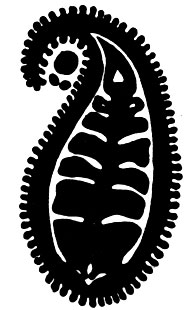
Fig. 66. Images of buta. Third group 'Jyga-buta' 44-46, 'Lelek-buta' 47, 'Kyusulu-buta' 48, 'Govushan-buta' 49, 'Fatir-buta' 50, 'Gyulabdan buta' 51-57, 'Yazyly-buta' 58, 'Man-buta' 59-62
The fourth group consists of the buta of different forms: "saya buta" [simple buta], "eiry buta" [curve buta], "dilikli buta" [toothed buta], "nyvrym buta" [volute buta], "shabaivt buta" [ancient buta], and so on. [see Fig. 67, 63-69]. .
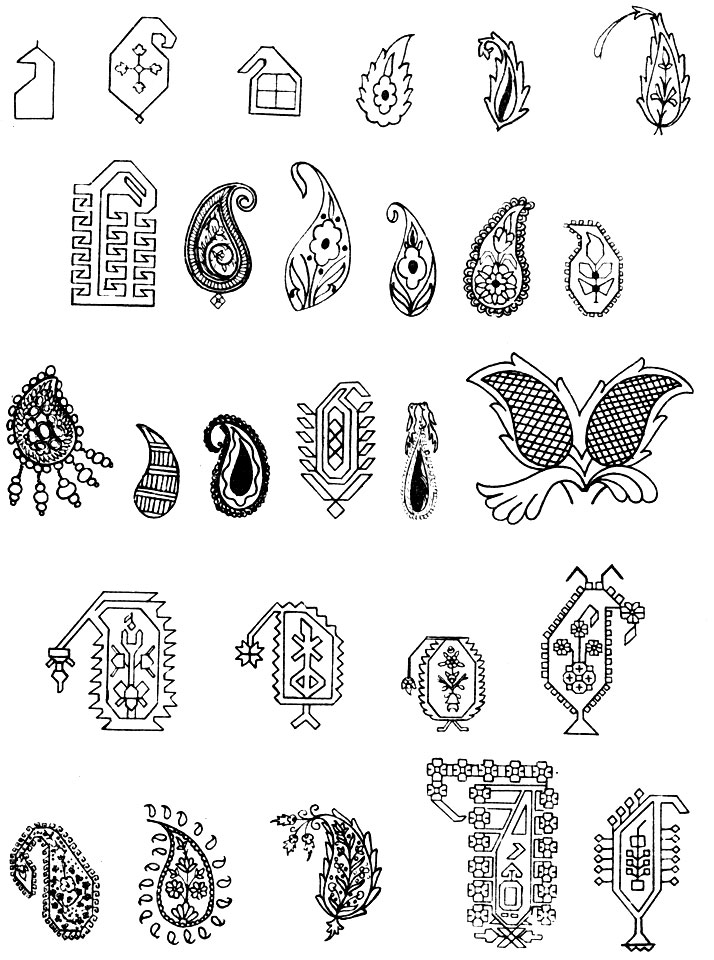
Fig. 67. Images of buta. Fourth group. 'Saya-buta' 63, 'Eini-buta' 64-65, 'Dilikli-buta' 66-68, 'Gyvrym-buta' 69-70, 'Garmagly-buta' 71-72, 'Shabalyt-buta'' 73, 'Badam-buta' 74 - 76, 'Zarkhara-buta' 77, 'Gadim-buta' 78, 'Dik-buta' 79, 'Gosha-buta' 80, 'Gotazly-buta' 81-84, 'Chichekli-buta' 85-88, 'Yanar-buta' 89
So it may be concluded that butas, which in remote time were religious, and fantastic concepts, and then they possessed the symbolical meaning, lost these meanings and gradually became the decorative elements, having different content and forms.
Vag-vagy
The details, having the originaf peculiarities and khown as vag-vagv, refer to the images of the living creatures.
Vag or vanin is a fantastic tree, fruits of this tree remind head of man or animal. The leaves appear in the morning on this tree, and in the evening they fall. The Turkish people called this tree, till recent past, as "danshan agach" [speaking tree].
In the Middle-age ornaments the name "vag" was usually given to a stylized image of head of man, elephant, lion, dog, goat or other animals, which were placed in spirals with double outline [branch-male] or single outline [branch-female] [Fig. 68].

Fig. 68. Khali with 'vag' image. Fragment. XVII century. India
Beginning from the XI- ХП-th centuries these images were placed at the joints of spirals [folked branch], and in the XIII-XlV-th centuries the heads were placed in the center of the plant elements, especially in the large flowers [Fig. 69], and often behing the flowers.

Fig. 69. Elements with 'vag' image
It is interesting to note, that the image of a bird [a nightingale, as a rule], at the rear view with its head down, is a svmbol of lone.
Ketebe
Ketebe is plural of the word Katib. Katib was a name, given in the past to a clerk at office or to a private secretary.
Ketebe is a name, given to a medallion of cylindrical or elongated form, which reminds the form of the gel. Ketebe differs from gels by the place they take in the composition. They are usually placed at the top of the elongated gels, that is they are between the gels and gubpa [Fig. 359].
If the borders, a center border in particular, are formed with Ketebe ornament, in this case they are called as Ketebels. It a large area of a carpet is decorated by different Ketebe, in this case they are called Ketebebendlik [Fig. 73]. In Ketebe the names of the master, painter or customer were written.
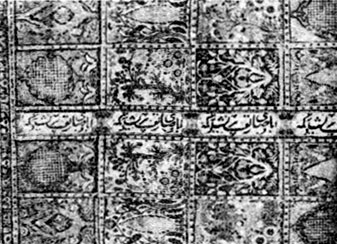
Fig. 73. Schematic image of Ketebe bend lik. Samples
Gel
One of a widely spread element of ornament is Gel. Gels were placed in the center of the composition, as a rule.
Gels, which took an important place in the Azerbaijanian decor; may be divided in the following groups: Gel of round form; Gets of elongated form; Gels of Quadrangular form and Gelbendlik.
1. Gels of round form are connected with the images of the heavenly bodies, such as sun [Fig. 77-13], moon, large and small stars, which a man worshipped in the past. Most Gels of round form have 8 or 16 teeth, seldom they have only 4, 6 or 10, 32.
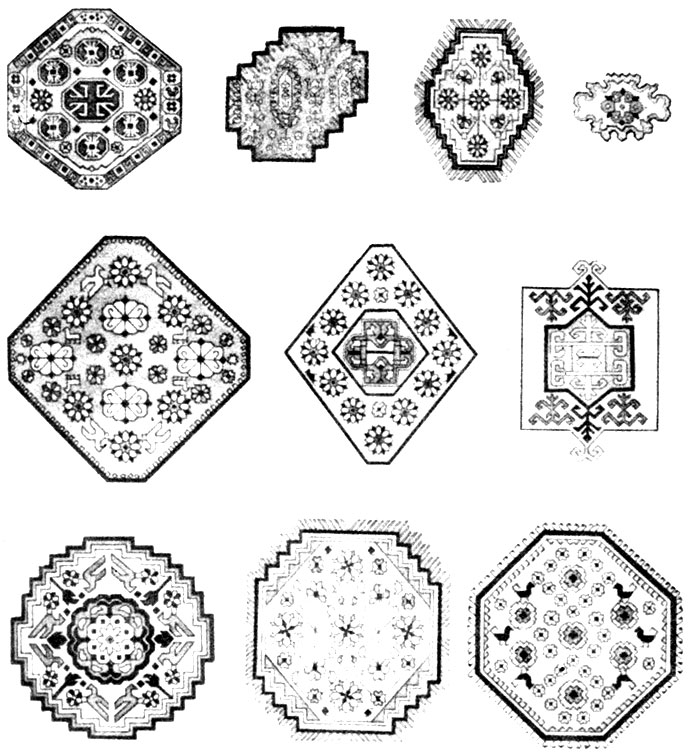
Fig. 77. Typical Gels. Characteristic to Baku group of carpets

Fig. 77. Typical Gels. Characteristic to Baku group of carpets
2. Gets of elongated form are larger in the length, than in width, or v. v. larger in the width than in length [Fig. 79-13, 14].
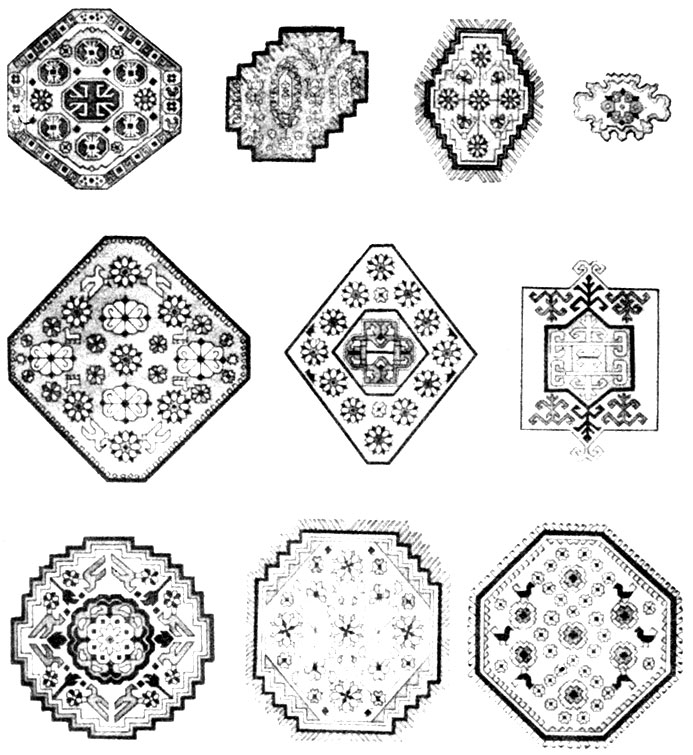
Fig. 79. Typical Gels. Characteristic to Karabakh group of carpets
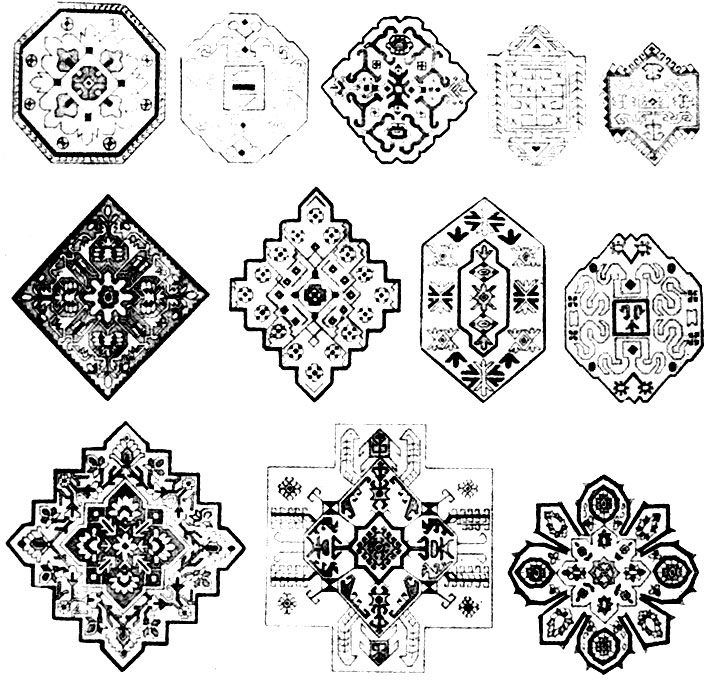
Fig. 79. Typical Gels. Characteristic to Karabakh group of carpets
3. Gels of a quadrangular form have a form of a sqare or polygon and other geometrical figures of that type [Fig. 78-22, 23, 20, 7, 19].
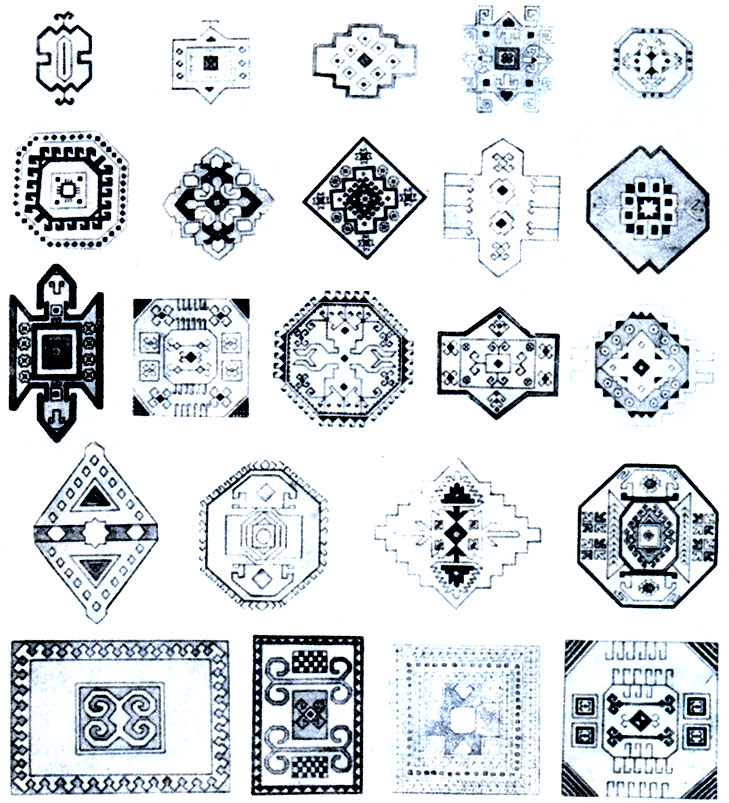
Fig. 78. Typical Gels. Characteristic to Gyanja-Kazakh group of carpets

Fig. 78. Typical Gels. Characteristic to Gyanja-Kazakh group of carpets
4. Gelbendlik - is a composition of gels of different forms. Gels of different forms take an important place in the decorative art of the Near East, Middle Asia and in Azerbaijan. People called them differently. In the West Europe they are known as "medallion", in Russia-"rosette". In the Middle Asia and Azerbaijan they are called as "gel".
Afshan
One of the mostly spread compositions of the decorative art of the Middle Asia, Near East and Azerbaijan is Afshan. The word "afshan" in the dictionary is translated as sow, strew.
The scheme of the "Afshan" composition consists maily of several branches in the form of spiral or picheks [curls], as the folk masters call them. The small spiral-picheks, placed at small distance from each other above the pattern [see "Balyg" carpet, table 81-2] are called simple, and the spiral-picheks, placed at large distance from each other above the pattern [Fig. 82] - complex.

Fig. 82. Khali. 'Afshan' composition. Painted by Latif Kerimov
It should be noted that the professional masters curve the spiral-picheks in the composition "Afshan" not geometrically - from the central point to the outer side, but v. v. from the outer side to the center.
The picheks either in simple or in complex compositions are. usually ended with the leaves of the profile image [vol. 1, Table 81, Fig. 1, 4, 5].
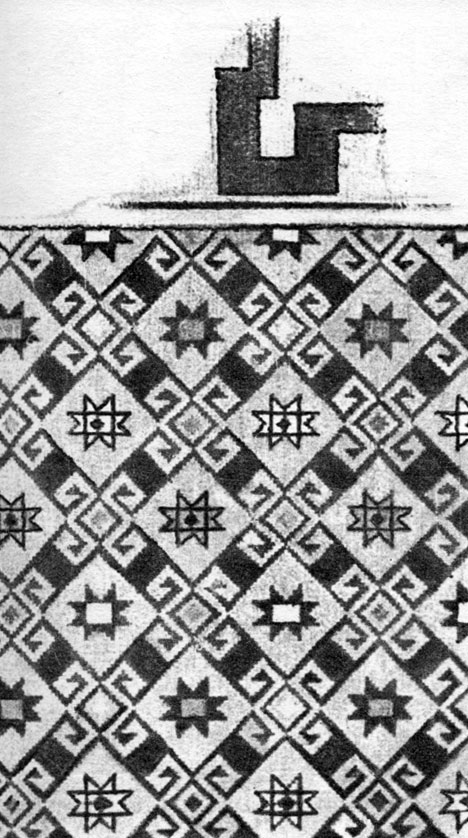
Fig. 4. 'Shirvan' carpet XII - XIII centuries. Istambul, Turk ve Islam Eserleri Muzesi, identified as 'Seljug'. Inv. N 682

Fig. 5. 'Gyanja' carpet. XIII century. Istambul, Turk ve Islam Eserleri Muzesi, identified as 'Seljug'. Inv. N 689
The "Afshan" composition is often met at the large Khali, at the famous "Sheikh Safi" Khali in particular [Fig. 368], as well as at Khali, devoted to V. I. Lenin [Fig. 83] [75 sq. m.].

Fig. 83. Khali 'V. I. Lenin'. Fragment. Central field - elements of er-kek-dishi shakhebendlik composition. Composed by Latif Kerimov. Baku, Branch of Central Museum of V. I. Lenin
Bendi rumi
The scheme of the composition of 'Wendi-rumi' includes the shebeks of different forms, mainly shebeks of the rhombous form, which look like a cell of the fishing-tackle. This composition has the symmetrically placed pattern. The decorative structure of "Bendi-rumi" composition depends on its simplicity [Fig. 84] or complexity [Fig. 85], on size and Duality of the decorated surface, if it is embossed or flat. The wide branches, representing a base of shebeke, are met or divided in the points at the axes of symmetry, all this presents a structural unit of the composition.
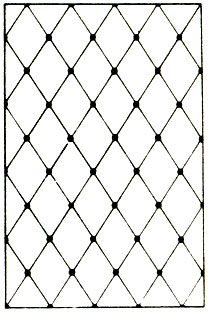
Fig. 84. 'Bendi-Rumi'. Simple composition

Fig. 85. 'Bendi-Rumi'. Complex composition
As it is known, in the past a man worshipped the animals, which were useful. Some of them became even totems. It may be supposed that "Bendi-rumi" composition is connected to the form of the beehive [Fig. 88]. The bees were considered in the past to be the sanctured ones, and they were, possible, dealt with as totems.
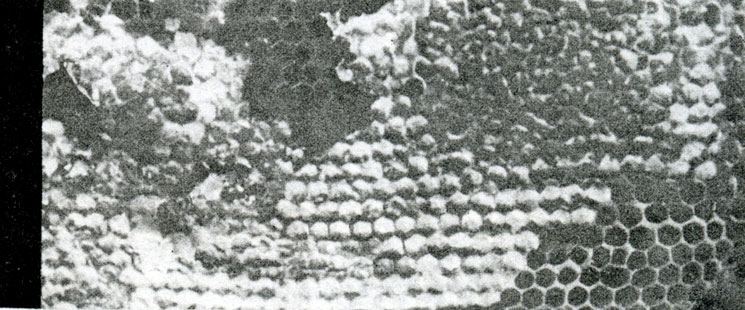
Fig. 88. Natural honey-combs in form of 'Bendi-Rumi'. Schematic construction

Fig. 88. Natural honey-combs in form of 'Bendi-Rumi'. Schematic construction
Tags and lachaks
The widely spread elements of the decorative art are Tags and Lacahs. This ornament was widely used in the decorative art of the people of the whole world. Tags [arches], which are used in architecture and in the folk, decorative art, may be of different forms:
semicircular "khalalitan-arch" looks like half-moon; when the top of the arch has a form of the obtuse angle, it is called as "beizantag" or "mekh-rablytag" the arch with the acute angle at the top is called as "diktag", "ittitag" or "sivritag" and at last, when the top is cutted, the arch is called as "kesiktag" - cutted arch [Fig. 92]. Kesiktag in Azerbaijan was more widely used than in other East countries.

Fig. 92. Schematic construction of arch; 1. Khilali tag; 2. Bezeiu tag; 3. Sivri tag; 4. Kesik tag
The decorative arch Lachak is one of the main elements of the ornament in the decorative art of Azerbaijan. The word "Lachak" is mainly used for decorated and finished arches and mekhrabs. "Lachak means "like face" or "small". Indeed if look attentively at the forms of lachak, you note that they remind the figure of a man. [Fig. 94-3].
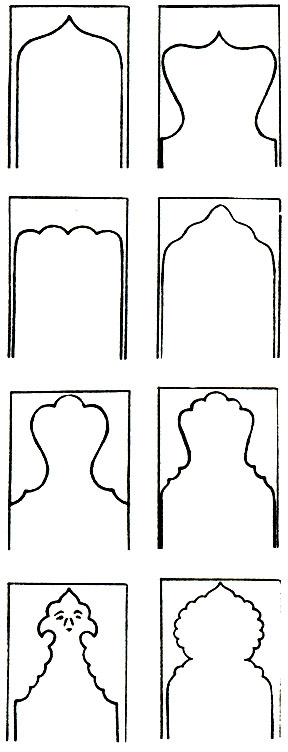
Fig. 94. Forms of decorative arch-lachak: 1. Saya-lachak 1-4; 2. Kheikalvari lachak 5-12; 3. Sivri lachak 13-16
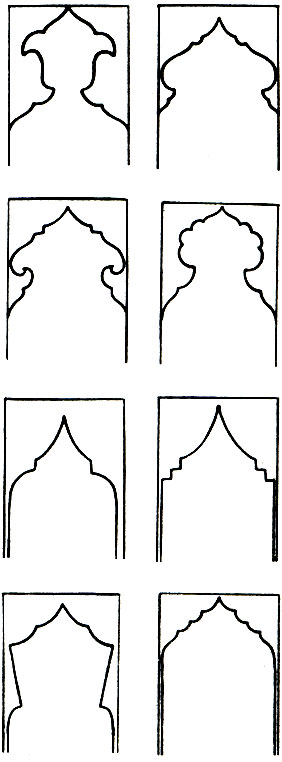
Fig. 94a. Forms of decorative arch-lachak: 1. Saya-lachak 1-4; 2. Kheikalvari lachak 5-12; 3. Sivri lachak 13-16
The lachaks may be classified in the following way: saya lachak [simple] [Fig. 94-1-4], kheikalvari lachak [idol-shaped] [Fig. 94-5-12], sivri lachak [acute angle] Fig. 94-13-16], kesik bashly lachak [cutted lachak] [Fig.95-21-24], dilikli lachak [toothed] [Fig. 95-25-32] [Fig. 96-33-36], sachly lachak [with hear] [Fig. 98].
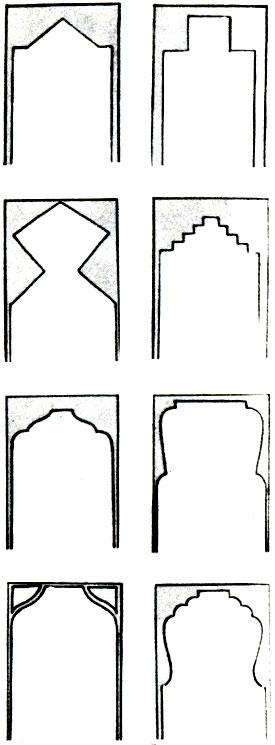
Fig. 95. Forms of decorative arch-lachak: Kesikkhatli lachak 17-2; Kesik-bashlylachak 21-24; Dilikli lachak 25-32
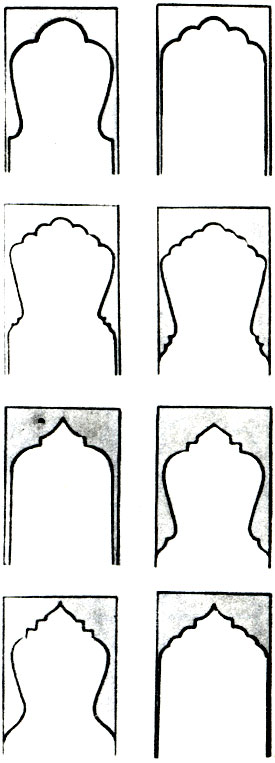
Fig. 95a. Forms of decorative arch-lachak: Kesikkhatli lachak 17-2; Kesik-bashlylachak 21-24; Dilikli lachak 25-32

Fig. 96. Forms of decorative arch lachak: Diliklyar lachak 33-36; Sachly-lar lachak 37-40; Lachaks of complex form 44-44; Bashdas-hylar lachak 45-48
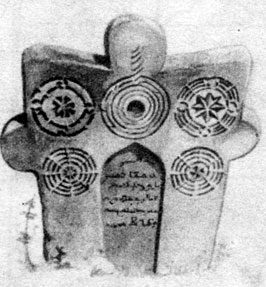
Fig. 98. Gravestone in the Graveyard. Judi village. Tabasaranian district IX-X centuries. In the form of man figure
Lachak turunj - a composition, which takes an important place in the carpet-making art. The scheme of this composition [Fig. 99] includes four main elements: turunj, lachak, ketebe and bashlyg [gubpa].
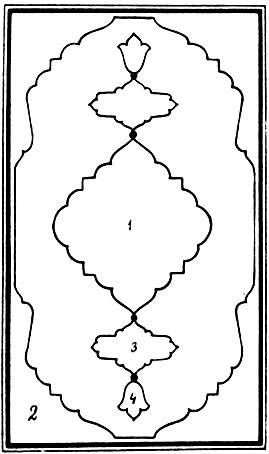
Fig. 99. Schematic composition of Lachak-turunj: 1. Turunj; 2. Lachak; 3. Ketebe; 4. Bashlyg and Gubpa
Namazlyk - These carpets, called in Azerbaijan as"jeinamaz", "namazluk"; "mekhrabi" differ from the other carpets either in formate or in composition. The decoration of Namazlyks, made in the South Azerbaijanian carpet-making areas in the XVI-XVII centuries, is represented by the verses from Koran and prays. The Namazlyk carpets are made of different size depending on its purpose. They are often used for the process of Namaz, perfomed by one man [Fig. 100, 101], sometimes for three persons [Fig. 102] and very seldom for public worship. The main details of the composition of a religeous character are the lines from prayings and verses from Kdran in Arabian language. The decor elements of the Namazlyks are arches and mekhrabs in the upper part of the center field.

Fig. 100. 'Maraza'. Prayer carpet for one man - Namazlyk. Shirvan district

Fig. 101. 'Namazlyk' carpet. Kazakh district. London. Victoria and Albert Museum. Early XIX century

Fig. 102. 'Namazlyk'. Prayer carpet for three men. South Azerbaijan. XVII century
Ovchulug [hunting]
The ancient Turkish people considered the hunting to be a magic religeous ceremony, playing an important role. As it is known the Turkish tribes had a lot of totems. The most important of them were the hunting birds.
It should be noted that during the hunting the people used the musical instruments so that to gather the animals to the place of hunting. These were lyre, horn, zurna, trumpet and others.
In the ancient time the people, who were adroit and virtuous at hunting, were considered to be corageous.
The name of the carpet "Ovchulug" is connected to the decorative composition of the carpet and its subject. We see on the carpets the images of animals and people.
The scenes of hunting may be seen not only on the carpets. This subject was used in all fields of decorative art as well as in miniatures.
Border strips
The border strips play an important role in the ornament of the work of art. They outline the fields, divide them into parts in different directions-perpendicularly, horisontally and so on. They are placed on the objects as an independent finished composition.
The border strips may be classified as follows, depending on the formate, composition and complexity:
a] Su. The strips of different size, which present a whole composition of the border strips on the works of art, are often divided from each other by means of "su". At the same time su makes the border strips more decorative, compact and finished.
"Su" at the carpets, embroideries, clothes and on some other soft materials may be of different forms depending on thickness and density. For example, at Kazakh carpets "su" may be approximately two times wider, than at Kuba and Shirvan carpets.
b] "ALAMUNJUK". A name, given to the points and small stars of different forms, which present the chain, directing horisontally or vertically. The "alamunjuk" has different names depending on its form and place in composition.
In the carpet composition it is called as "sichandishi" [teeth of a mice], "guahdulya" [a small grain], "muzh muzha" [eyelash]. In most cases "alamunjuk" is placed between the double "su" no dependence on the technological peculiarities.
c] "MEDAKHIL". Medakhil is two-three times wider, than alamunjuk. It is placed at the beginning or at both sides of the border strip of complex composition.
d] "ZENJIRE" - a border outline in one or one and a half time wider than medakhil. It is usually met at the multistriped borders. Pattern of zenjire is quite different from the pattern of the above mentioned stripes: zenjire permits not only to increase the distance between the pattern but also complicate its composition.
e] "BALAKHASHIE" - or a small border, is usually placed between medankhil and zenjire, that is between the strips of the complex structure.
f] "ANAKHASHIE" - or arakhashie [middle or main border]. The middle border is wider than other border strips. It is placed in the center of the border composition.
"Let us study the general structure and composition of the border strips. All ornaments of the border strip are divided into patterns, which are placed in different distances. Distance, length of the patterns mainly depend on the width of the border. In other words if the medakhils of the narrow strip are divided into patterns with small distances, the patterns of the middle border are at large distances. The patterns, placed symmetrically or asymmetrically, create a chain of the ornament and present the general border composition. In the monograph for first time the names of the carpets are classified, the description of the decorative and technical peculiarities is given as a result of continuous research work.
There is no possibility to vive the description of all carpets according to scheme in English. That's why we give in the 2-nd volume the complete description of "Kuba" carpet, Kuba-Shirvan type, Kuba group.
"Kuba"
[Scheme 2, Table 3-1, 3-2]
The name "Kuba" is given to the carpets because they are made in the town Kuba, refer to Kuba group, Kuba-Shirvan type.
Kuba is a town in the north-east of Azerbaijan, at Gudelchai river. It is a center of Kuba district. Kuba is famous for its fruit gardens, apple trees in particular, as well as for its delicate-woven carpets with different ornament.
Analysis
The most famous carpets, made by Kuba carpet-makers, are the carpets with one gel [Table 3-1].
The composition of the center field of the carpet usually includes several large gels and ketebe, placed one after another along the main axle in the vertical direction.
The medallions in this carpets lost their meaning of gels, tabaga, tray. They refer to a decorative medallions, formed by the curve lines, changed their appearance in the process of the carpet-making art development.
In the given carpets the gels have an elongated [along a horisontal line] form, as the density of the knots in the width and in the length is not the same. In the other words the number of the rows of knots in the length [in each dm 55 rows] is more than the number of rows of knots in the width [in each dm 35 rows]. Besides large ketebe are placed between these medallions, this is considered to be a decorative peculiarity of this carpet. Around the medallions and ketebe there are a lot of large and small elements of different form. The center field of the composition is considered to be unlocked.
The border ornament of the "Kuba" carpets includes different stripes-middle outline, small outline, medakhil. The element, which is considered to be the main decoration and presents the pattern of the outline, the carpet-makers call as "tongal" - kosetr.
The center field of the "Kuba" carpets is usually darkblue, sometimes it is red. Technical Peculiarities.
Dimention of "Kuba" carpets is 110X 220 sm [the first variant] and 130X 220 sm [the second variant].
Density of knots - from 40x40 to 50x50 [in each square meter from 160 000 to 250 000 knots], height of nap - 4,7 mm
The "Kuba" carpets are considered to be the carpets of medium-sort in the Kuba-Shirvan group.
|
ПОИСК:
|
При копировании материалов проекта обязательно ставить ссылку:
http://artyx.ru/ 'ARTYX.RU: История искусств'
